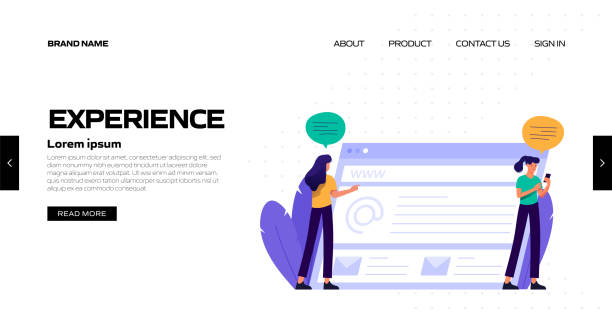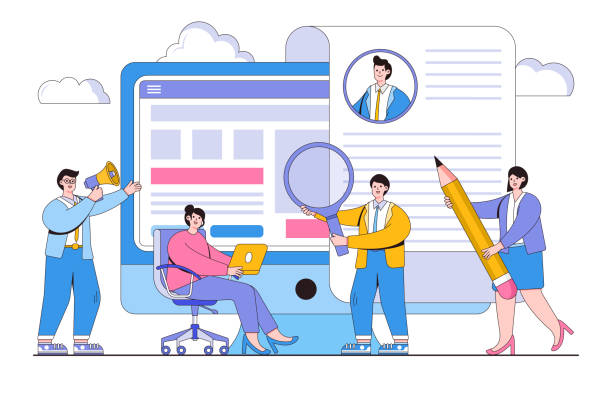An Introduction to Multilingual Website Design and Its Importance
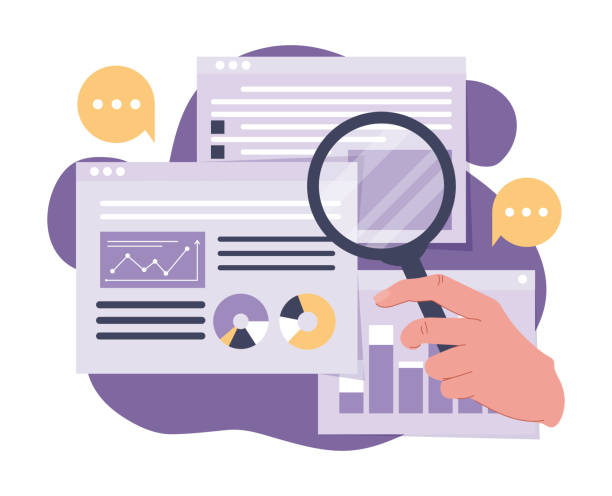
In today’s world, where geographical boundaries have faded, #multilingual_website_design is no longer a luxury option but a necessity for any business aspiring to global expansion.
This #educational approach shows you how to open new doors to international markets by offering your content in various languages.
A multilingual website is not merely about translating words; it’s about the complete localization of the user experience for diverse audiences.
This includes understanding cultural differences, regional preferences, and even the formatting of numbers and dates.
The main #specialized goal in this field is to establish deeper connections with potential customers worldwide.
With an international website, your business’s credibility and accessibility significantly increase.
This is a comprehensive #explanatory strategy for entering new markets and increasing market share.
Search Engine Optimization (SEO) in a multilingual environment has its own complexities that must be carefully observed.
Ignoring these aspects can lead to missing out on great opportunities to attract international traffic.
Therefore, investing in multilingual website development is a strategic and vital decision for the future of any company.
This is the foundation for sustainable growth in the digital age.
Are you tired of your company’s website not meeting your expectations? Design a professional website with Rasawp that truly represents your business.
✅ Increase the attraction of new customers and sales leads
✅ Enhance your brand’s credibility and trust among your audience
⚡ Get a free website design consultation!
Competitive Advantages of Multilingual Websites

The main competitive advantage of a multilingual website is its ability to access new and larger markets.
When you provide your content in multiple languages, you not only reach a greater number of users but also gain their trust and loyalty.
Users tend to visit websites and make purchases from those that offer information in their native language.
This directly leads to an increase in conversion rates and a decrease in bounce rates.
From an SEO perspective, a properly implemented multilingual website design allows you to rank for various keywords in different languages.
This means a significant increase in organic traffic from diverse geographical regions.
Furthermore, presence in international markets helps strengthen your brand globally.
By providing analytical content about product or service features in different languages, you can facilitate customer decision-making.
This approach distinguishes you from competitors who only operate in one language and establishes a leading position in the industry.
The ability to offer customer support in various languages is also a major advantage that improves the user experience and increases customer satisfaction.
Multilingual web development allows you to gather valuable data and insights into user behavior in different regions, which in turn helps continuously improve your marketing strategies.
Challenges and Solutions for Implementing Multilingual Website Design
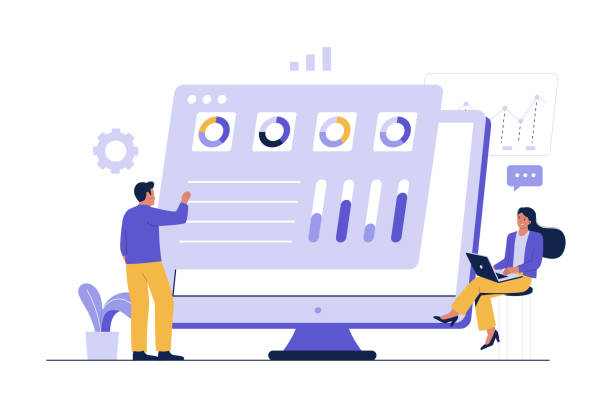
Implementing a successful multilingual website design comes with challenges that require careful planning and appropriate solutions.
One of the biggest challenges is content management and ensuring the accuracy and quality of translations.
Machine translation is never a suitable substitute for human translation and localization by specialized professionals.
Another challenge relates to URL structure and how to manage Hreflang tags to prevent duplicate content issues and correctly signal to search engines.
Maintaining and updating multilingual content can also be complex and time-consuming.
To provide comprehensive guidance, attention must be paid to choosing a suitable Content Management System (CMS) that offers strong multilingual capabilities.
Additionally, establishing an efficient workflow for content translation and publication is essential.
For example, using Translation Management Platforms (TMS) can facilitate the process.
Issues related to responsive design and how texts are displayed in different languages, especially right-to-left (RTL) languages like Persian and Arabic, are other important considerations.
Optimizing website loading speed (Page Speed) for users in more distant geographical regions is also important, which can be improved by using a CDN.
| Feature | Human Translation (Professional) | Machine Translation (with Editing) | Machine Translation (without Editing) |
|---|---|---|---|
| Quality and Accuracy | Very high, localized | Medium to good, needs review | Low, inaccurate, no localization |
| Cost | High | Medium | Very low (free) |
| Speed | Medium (volume dependent) | High | Very high |
| Suitable for | Sensitive content, marketing, legal | General content, blog, basic information | Personal use, general understanding (not recommended for websites) |
| SEO and Localization | Excellent, local keywords | Medium, needs manual optimization | Poor, lack of understanding of search phrases |
International Standards and SEO Tips in Multilingual Website Design

For a multilingual website to perform well in search engines, adherence to international standards and SEO tips is essential.
The most important aspect is the correct use of the Hreflang tag.
This tag informs Google and other search engines which version of a page is intended for which language and geographical region, and prevents duplicate content issues.
URL structure also plays a key role.
You can use subfolders (e.g., yoursite.com/fr/), subdomains (fr.yoursite.com), or even country-code Top-Level Domains (TLDs) (yoursite.fr).
Each has its advantages and disadvantages that must be chosen based on business goals and available resources.
Producing unique and high-quality content for each language is essential; simply translating keywords is not enough.
Instead, keyword research should be conducted separately for each language and culture to ensure that the content aligns with how native users search.
This is an #educational and ongoing approach that requires regular monitoring and updating.
In multilingual website design, loading speed and user experience (UX) for international users are also very important.
Using web hosting servers close to target audiences or a CDN can help improve these parameters.
The role of Google Search Console for monitoring the multilingual performance of the site and identifying potential problems is also crucial.
Do you know that customers’ first impression of your company is your website? Multiply your business’s credibility with a powerful corporate website from Rasawp!
✅ Custom and eye-catching design tailored to your brand
✅ Improved user experience and increased customer attraction
⚡ Get a free consultation now!
Suitable Tools and Platforms for Multilingual Website Design
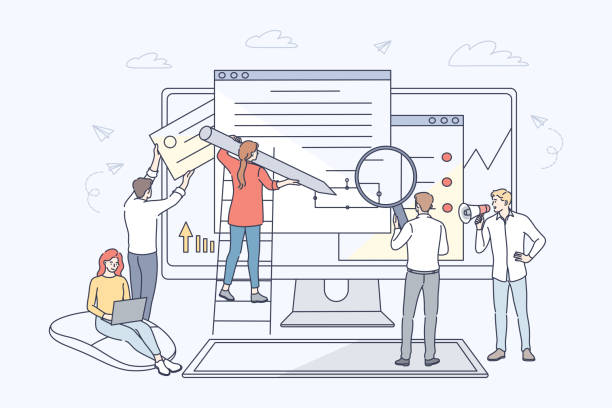
Choosing the right tools and platforms plays a vital role in the success of a multilingual website design.
Content Management Systems (CMS) like WordPress with plugins such as WPML or Polylang, Drupal with built-in multilingual capabilities, and Joomla are popular choices.
These platforms offer tools for managing translations, language switching, and structuring multilingual content.
For larger and more complex projects, using Translation Management Platforms (TMS) such as Smartling, Phrase, or Lokalise is recommended.
These tools enable the management of translation projects, collaboration with translators, and the use of Translation Memory and Glossaries, which significantly help maintain translation quality and speed.
Some of these TMSs also offer API capabilities for direct connection to your CMS, automating the content update process.
Also, SEO tools like Ahrefs, Semrush, and Google Keyword Planner are crucial for multilingual keyword research.
They help you identify appropriate search terms for each language and region.
These specialized choices can save significant time and money in the long run and optimize your website’s performance.
Producing and Managing Effective Multilingual Content

Producing and managing effective multilingual content goes beyond simple translation.
For success in multilingual website design, content must be localized and tailored to the culture and preferences of the audience for each language.
This means that some concepts, jokes, or even cultural references might not work in one language and may require rewriting or replacement.
Using native translators specializing in your field is very important; they can ensure that the tone, terminology, and overall message are correctly conveyed.
Developing a multilingual content calendar also helps organize and coordinate content publication across different languages.
This calendar should include translation, review, and publication timelines to ensure the content’s freshness and relevance in all languages.
To provide engaging content in each language, you can use local stories or regional case studies that resonate with specific audiences.
Furthermore, managing images and videos in a multilingual environment is very important.
Some images may be appropriate in one culture but cause misunderstanding in another; therefore, special attention must be paid to these details.
Maintaining brand consistency and the core message across all languages, while localizing, is a challenge that requires a strong strategy and continuous monitoring.
To avoid problems, creating a style guide for each language or a general guide for translation and localization will be beneficial.
Optimizing User Experience in Multilingual Websites

Optimizing user experience (UX) in multilingual website design is of paramount importance and directly impacts conversion rates and user satisfaction.
The first point is to clearly and accessibly place a language switcher.
This switcher should be in a visible location, usually in the header or footer of the site, and be easy to use.
For languages like Persian or Arabic, which are written right-to-left (RTL), the user interface design must support this direction.
This includes the layout of elements, text direction, and even image display, which must be adjusted to match the native reading direction.
Website loading speed is crucial for users in different parts of the world.
Using a Content Delivery Network (CDN) is recommended to deliver content quickly to global users.
Also, date, time, currency, and measurement systems should be localized to the user’s region to create a smooth and natural user experience.
Providing entertaining content, while considering cultural differences, can also help attract more users.
Fonts and typography must also be optimized for each language to maintain text readability and aesthetics.
| UI/UX Element | Description | Importance in User Experience |
|---|---|---|
| Language Switcher | Flag icon or full language names in a clear location (header/footer). | Easy access to localized content, improved navigation. |
| RTL/LTR Support | Adjusting UI orientation (text, layout) for right-to-left languages (like Persian). | Readability and visual comfort for local users, preventing clutter. |
| Format Localization | Automatic adjustment of date, time, currency, measurement systems. | Providing understandable and natural information, increasing trust. |
| Font and Typography | Choosing legible and appropriate fonts for each writing system. | Improving text aesthetics and readability, impacting brand. |
| Feedback and Messages | Error, confirmation, and warning messages in the user’s language. | Clarity and user guidance, reducing confusion. |
The Role of Keyword Research in Multilingual SEO

Keyword research in multilingual SEO is a complex and highly analytical process that differs from direct keyword translation.
What is considered a common keyword in one language may have a different meaning or not be searched for at all in another.
Therefore, for a successful multilingual website design, separate keyword research must be conducted for each target market.
This process involves understanding the search intent of native users, common terminology, and even regional differences within a single language.
Using local and international keyword research tools such as Google Keyword Planner, Semrush, Ahrefs, and KWFinder for each language is essential.
These tools help you find keywords with high search volume and appropriate competition in each market.
Additionally, analyzing competitors in local markets and examining their keyword strategies can provide valuable insights.
Localizing keywords means adapting them to the phrases and terms that native users actually use.
This also includes considering dialectal and cultural differences.
For example, a product might have one name in Spain and another in Mexico.
This precision in keyword research is the foundation of a strong multilingual SEO strategy that helps your website rank higher in search results for its target audience.
Are you tired of your company’s website not getting the visibility it deserves and losing potential customers? Solve this problem forever with professional and effective website design by Rasawp!
✅ Increase brand credibility and gain customer trust
✅ Attract targeted sales leads
⚡ Contact us now for a free consultation!
Performance Analysis and Continuous Improvement of Multilingual Websites
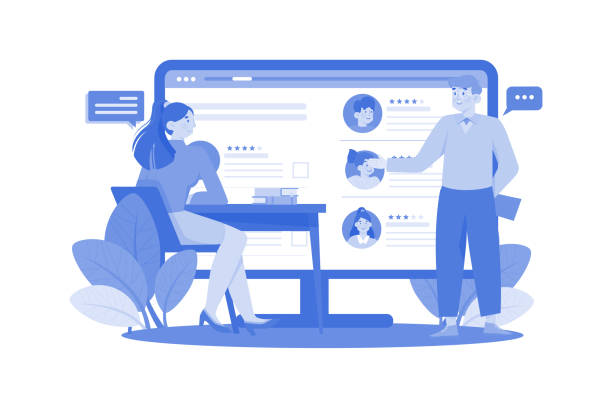
After launching and optimizing a multilingual website, the next step is performance analysis and continuous improvement.
Tools like Google Analytics and Google Search Console are essential for monitoring traffic, user behavior, and SEO performance in each language and geographical region.
These tools allow you to see which languages and countries drive the most traffic to your site, how long users spend on different pages, and what the conversion rate is in each language.
By analyzing this data, you can identify opportunities for improvement.
For example, if you observe a high bounce rate in a specific language, it may indicate quality problems in the translation or a mismatch between the content and the expectations of that culture.
News of search engine algorithm changes or new market trends can impact your multilingual SEO strategy.
Conducting A/B testing on various website elements, such as calls-to-action (CTAs) or page layout, can help optimize the user experience and increase conversion rates in each language.
Gathering feedback from native users is also very valuable.
Their opinions can help you identify hidden problems and make targeted improvements.
The process of continuous improvement in multilingual website development ensures that your site remains competitive and relevant to the needs of global audiences.
The Future of Multilingual Website Design and Emerging Trends

The future of multilingual website design is intertwined with technological advancements and changes in user behavior.
One of the most important emerging trends is the increasing role of Artificial Intelligence (AI) and Machine Learning in translation and localization.
While pure machine translation still doesn’t match the quality of human translation, AI-powered tools with continuous learning and improvement capabilities are changing the game.
They can speed up the translation process and reduce costs, although human review is still needed.
Another important trend is optimization for voice search in different languages.
With the increasing use of voice assistants, websites must be prepared to respond to voice queries in various languages.
This requires more conversational content and direct answers.
Also, the growth of emerging markets and increased internet access in regions with less common languages provide new opportunities for multilingual web development.
No-code and Low-code platforms will also simplify the process of building and managing multilingual websites for small and medium-sized businesses.
Providing explanatory and comprehensive content about these technologies can help businesses plan for the future.
Therefore, to maintain competitiveness in the future, businesses must continuously update their multilingual website design strategy and leverage new technologies.
Frequently Asked Questions
| No. | Question | Answer |
|---|---|---|
| 1 | What is multilingual website design? | Multilingual website design means creating a website whose content is available to users in several different languages. This is usually done through a simple user interface for language switching. |
| 2 | Why should we design a multilingual website? | Designing a multilingual website helps you reach more audiences worldwide, provide a better user experience for international users, and improve your global SEO. |
| 3 | What are the main methods for implementing multilingualism on a website? | The main methods include using subdomains, subdirectories, or URL parameters for each language, as well as using completely separate domains for each language. |
| 4 | For SEO, is it better to use a subdirectory or a subdomain? | From an SEO perspective, both subdirectories and subdomains can be effective. However, many SEO experts prefer subdirectories due to better transfer of main domain authority. |
| 5 | What are the important tips for translating multilingual website content? | Translation should be done by native translators, content should be localized in addition to translation to match the target audience’s culture, and pure machine translation should be avoided. |
| 6 | What is the role of the hreflang tag in multilingual website SEO? | The hreflang tag helps search engines like Google display the correct language and regional version of a page to the appropriate users, which also prevents duplicate content issues. |
| 7 | Can a website be made multilingual without coding? | Yes, in Content Management Systems (CMS) like WordPress, powerful plugins such as WPML or Polylang exist that enable multilingual website functionality without the need for coding. |
| 8 | What are the challenges of multilingual website design? | Challenges include translation management, content localization, adhering to SEO principles for each language, technical support for different languages, and ensuring design consistency across different languages. |
| 9 | What is the difference between translation and localization? | Translation is merely rendering words from one language to another, while localization involves adapting content to the culture, customs, currency, date and time formats, and even appropriate colors for the target audience. |
| 10 | What is the best user experience (UX) for a language switcher? | A clear and accessible language switcher (usually in the header or footer), using the language name instead of a flag (due to regional diversity), and maintaining the user’s position after changing the language are important UX considerations. |
And other advertising services of Rasa Web Advertising Agency in the field of advertising
Smart Google Ads: Revolutionize user interaction with smart data analysis.
Smart Google Ads: Transform website traffic growth with Google advertising management.
Smart Marketplace: A quick and efficient solution for customer acquisition, focusing on attractive UI design.
Smart Website Development: An innovative service for increasing online growth through Google advertising management.
Smart Social Media: Designed for businesses looking to increase click-through rates by optimizing key pages.
And over a hundred other services in the field of internet advertising, advertising consultation, and organizational solutions
Internet Advertising | Advertising Strategy | Sponsored Articles
Resources
Comprehensive Guide to Multilingual Website Design
Key SEO Tips for Attracting Global Customers
Website Design Services for International Businesses
How to Globalize Your Business?
? For your business to shine in the digital world and achieve its lofty goals, Rasawp Digital Marketing Agency is by your side with its expertise and experience. We pave the way for your growth by offering comprehensive digital marketing solutions, including website design with a modern user interface, SEO, online advertising, and social media management.
📍 Tehran, Mirdamad Street, next to Bank Markazi, Kazerun South Alley, Ramin Alley, No. 6

